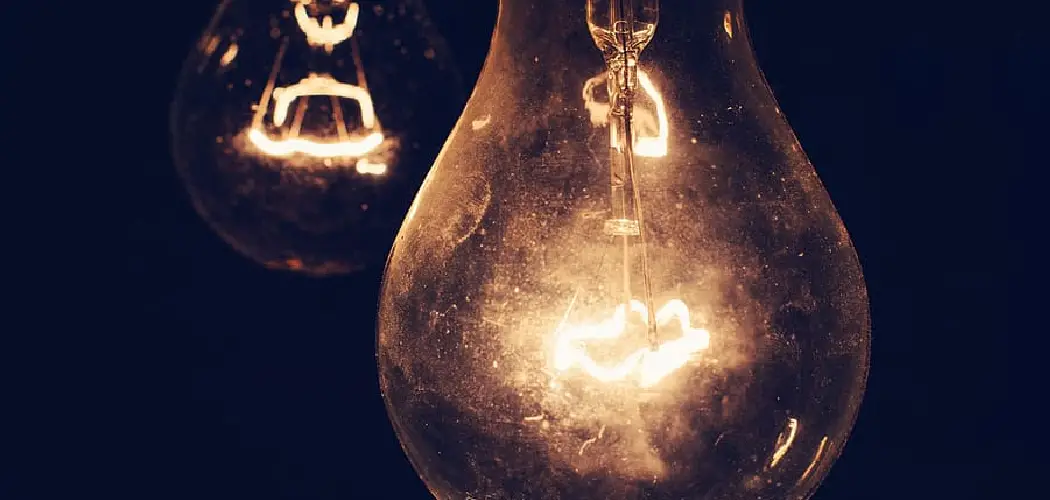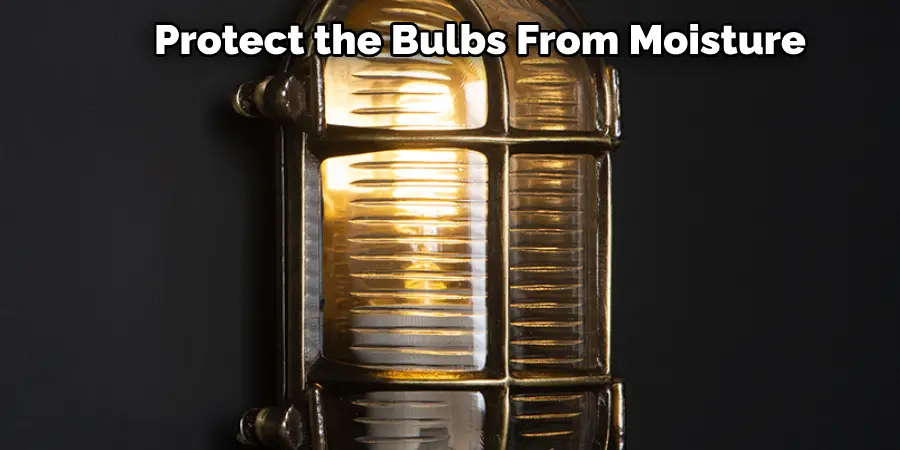Most people think of the standard incandescent or fluorescent light bulbs when it comes to light bulbs. However, other types of light bulbs are available on the market, including LED and halogen light bulbs. While these different light bulbs have their benefits, one question that often comes up is whether or not they can be used outside. In this article, we will explore can you use indoor light bulbs outside and provide some tips for using them in outdoor spaces. Keep reading.
Summary: Using indoor light bulbs outside is generally not recommended, as they are not designed to withstand the harsh environmental conditions and temperature fluctuations typically found outdoors. Indoor light bulbs often lack the necessary features to protect them from moisture, humidity, extreme temperatures, and direct sunlight, which can result in reduced performance, shorter lifespan, and potential safety hazards. Instead, it is advisable to use light bulbs specifically designed for outdoor use, which come with the necessary protections and ratings to ensure safe and efficient operation in exterior environments.
Outdoor light bulbs are manufactured with durable materials and protective coatings that can withstand the elements and temperature variations. They are also typically rated for wet or damp locations, ensuring that they are safe to use in various weather conditions, such as rain, snow, or high humidity. When selecting light bulbs for outdoor use, look for products with the appropriate IP (Ingress Protection) rating, which indicates the degree of protection against dust, water, and other environmental factors.
Additionally, consider using energy-efficient options such as LED or CFL bulbs, which can provide significant energy savings and longer lifespans compared to incandescent bulbs. By using outdoor-rated light bulbs in exterior settings, you can ensure the safety and longevity of your lighting system while avoiding potential hazards and performance issues associated with using indoor light bulbs outside.

Light bulbs are classified according to their intended use. There are three main light bulbs: general-purpose, rough service, and enclosed fixtures. General-purpose light bulbs can be used in both indoor and outdoor fixtures. Rough service light bulbs are designed for challenging applications such as construction sites or parking lots. Enclosed fixture light bulbs are for use in fixtures that are fully enclosed, such as street lights. You can use indoor light bulbs outside, but there are a few things to consider.
A Detailed Guide on Can You Use Indoor Light Bulbs Outside
Features of Indoor Light Bulbs
The following are some features of indoor light bulbs that you should be aware of before using them outside:
- They emit a bright, white light that is perfect for indoor use.
- They consume less energy than traditional incandescent bulbs, making them more environmentally friendly.
- They have a longer lifespan than incandescent bulbs, so you won’t have to replace them as often.
- They are not outdoor rated and
- They may not stand up to the elements as well as an outdoor light bulb.
If you’re looking for bright, white light for your outdoor space, you may be wondering if you can use indoor light bulbs outside. While indoor light bulbs are not rated for outdoor use, some types can withstand the elements. Before using indoor light bulbs outside, check the features and ratings to ensure they will work for your needs.
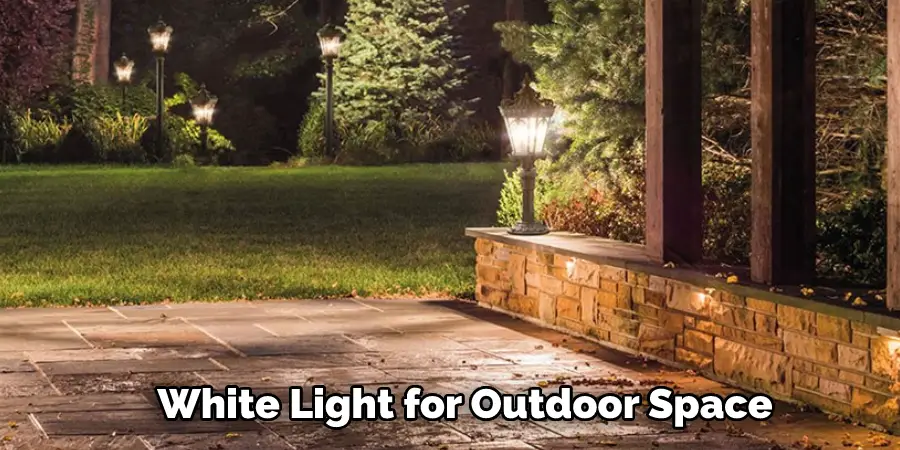
Outdoor Light
When choosing an outdoor light bulb, it is essential to consider the following factors:
- The type of bulb. There are a variety of outdoor light bulbs available, including incandescent, CFL, and LED bulbs. Each type has its benefits and drawbacks.
- The wattage of the bulb. The higher the wattage, the brighter the light will be. However, higher wattage bulbs also use more energy.
- The color of the light. Some outdoor light bulbs emit white light, while others emit a softer, yellow light.
- The size of the bulb. Outdoor light bulbs come in various sizes, so it is essential to choose one to fit your needs.
If you are looking for a long-lasting and durable outdoor light bulb, an LED bulb may be a good option for you. LED bulbs are more energy-efficient than other types of bulbs and can last for up to 50,000 hours. However, they may be more expensive than other types of bulbs.
CFL bulbs are also a good option for outdoor lighting. They are cheaper than LED bulbs and last for around 10,000 hours. However, CFL bulbs contain mercury, so they must be disposed of properly.
Incandescent bulbs may not be the most energy-efficient option, but they are usually the cheapest. These bulbs also emit a warm, yellow light that some people prefer. However, they don’t last very long – usually only around 1,000 hours.
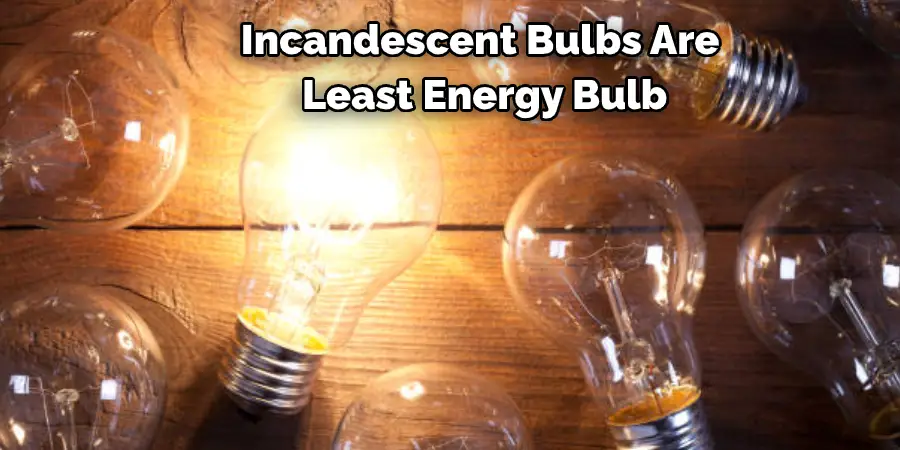
When choosing an outdoor light bulb, it is essential to consider your needs and budget. LED bulbs are the most energy-efficient and durable option, but they may be more expensive than other bulbs. CFL bulbs are a good middle ground option, while incandescent bulbs are the cheapest.
Here Are a Few Things to Keep in Mind When Using Indoor Light Bulbs Outdoors:
- Check the IP Rating: The first thing you need to do when using indoor light bulbs outdoors is to check the IP rating. The IP rating will tell you how well the bulb is protected from dust and water. You want to make sure that the bulb you are using has a high IP rating so that it can withstand being outdoors.
- Consider the Weather: Another thing to keep in mind when using indoor light bulbs outdoors is the weather. You want to make sure that the bulb can withstand the elements. If you are using the bulb in an area that gets a lot of sun, you want to make sure that it is rated for UV resistance.
- Choose the Right Bulb: When using indoor light bulbs outdoors, you also want to make sure that you choose the correct bulb. Different types of bulbs are better suited for various applications. You want to make sure that you select a bulb designed for outdoor use.
- Follow the Instructions: When using indoor light bulbs outdoors, you also want to make sure that you follow the instructions. Some bulbs are not meant to be used in specific ways. Make sure that you read the instructions to use the bulb correctly.
By following these tips, you can ensure that you are using indoor light bulbs outdoors correctly. This information will help in understanding can you use indoor light bulbs outside
Precautions When Using Indoor Light Bulbs Outdoor
- Avoid using indoor light bulbs outdoors if the conditions are wet or humid.
- If you must use them, make sure to protect the bulbs from moisture by enclosing them in a waterproof fixture or covering them with a plastic bag.

- Be sure to check the wattage rating of the bulbs before using them outdoors. Higher wattage bulbs produce more heat and can be a fire hazard if used in an enclosed space.
- Inspect the cords and sockets of the light fixtures before each use to ensure that they are in good condition and not damaged. Do not use fixtures with frayed or exposed wires.
- Never leave outdoor lights on unattended for extended periods. Turn them off when you are away from home or sleeping.
You can use indoor light bulbs outdoors by following some simple precautions. First, check the wattage rating of the bulbs before using them. Second, always turn them off when you are not home to supervise them. With a little bit of care, you can enjoy the beauty of outdoor lighting without any worries.
Can You Use Indoor Chandelier Outside?
Many people love the look of indoor chandeliers and wonder if they can use them outside. The simple answer is yes, but there are a few things to consider. First, indoor chandeliers are not made to withstand the elements and will rust over time if exposed to rain or snow. Second, indoor chandeliers often have exposed bulbs, which can be a safety hazard if they contact flammable materials.
Finally, indoor chandeliers typically have lower wattage bulbs, which may not provide enough light for outdoor use. With these considerations in mind, it is possible to use an indoor chandelier outside. Still, it is important to take care to protect it from the elements and choose a location that is safe from flammable materials.
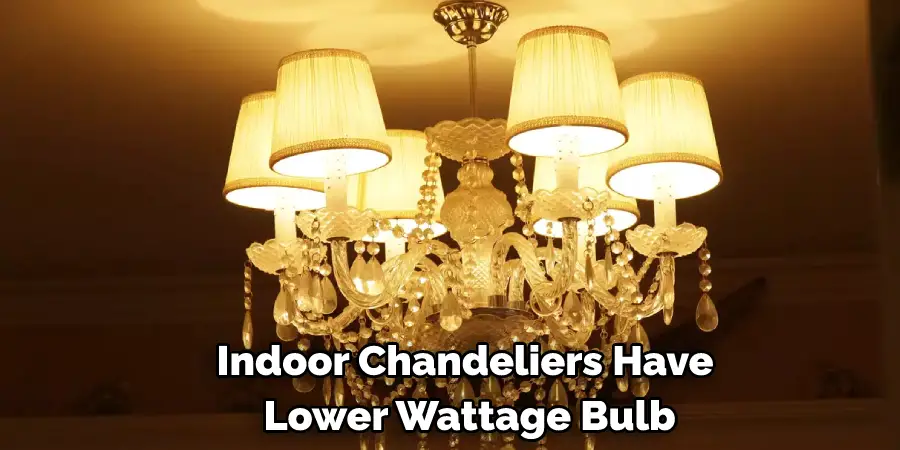
What Happens if Indoor Lights Get Wet?
You should never get electrical appliances or indoor lights wet, because water and electricity can be dangerous together.
If water comes into contact with an electrical circuit, it can cause a short circuit, which can, in turn, lead to a fire. In addition, water can damage lightbulbs, making them less efficient or causing them to fail altogether. While it’s always best to avoid getting your lights wet if it does happen, be sure to shut off the power at the breaker box and call an electrician for assistance.
What Happens if You Use an Indoor Light Bulb Outside?
While most light bulbs are designed for specific purposes, some can be used for indoor and outdoor lighting. However, bulb manufacturers do not recommend using an indoor light bulb outside. The main reason for this is that indoor light bulbs are not as durable as outdoor bulbs and are more likely to break if exposed to the elements.
In addition, indoor light bulbs typically have a lower wattage than outdoor bulbs and may not provide enough light for outdoor use. Finally, most indoor light bulbs are not designed to withstand extreme temperature changes and may stop working properly if used in cold or HOT weather. Therefore, it is best to stick with outdoor-specific light bulbs when choosing bulbs for your exterior lighting needs.
Do Led Christmas Lights Cause Fires?
One of the most popular questions we get asked during the holiday season is whether or not LED Christmas lights cause fires. The answer, fortunately, is no. While traditional incandescent bulbs can produce enough heat to cause a fire, LEDs operate at a much cooler temperature. You can even touch an LED bulb without the risk of being burned. However, that doesn’t mean that LEDs are immune to all problems. If an LED light is damaged, it can start to flicker and produce sparks. If this happens, it’s essential to replace the light as soon as possible. While LED lights are unlikely to cause a fire, they can still pose a safety hazard if not properly maintained.
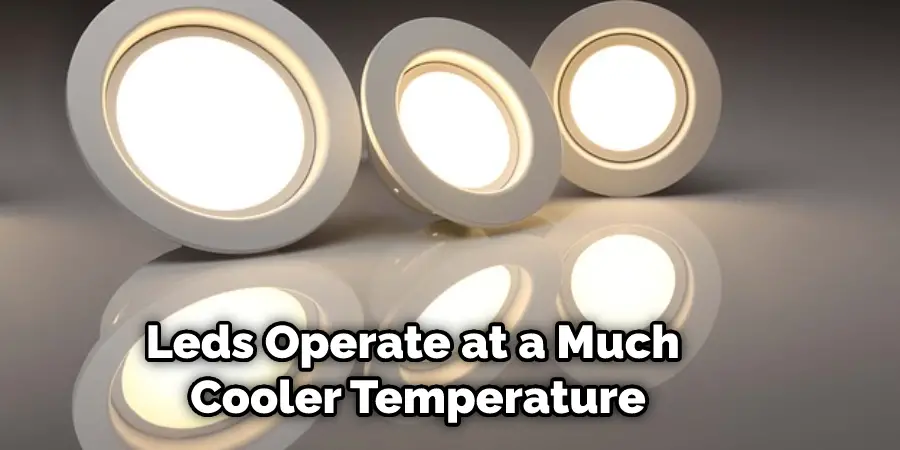
Frequently Asked Questions
What Happens if You Use an Indoor Light Bulb Outside?
If you use an indoor light bulb outside, it likely won’t work very well and could even be illegal.
Lights that are designed for outdoor use typically have a higher wattage and are made to handle harsh weather conditions. This means that they emit less ultraviolet (UV) radiation, which can damage your eyes and skin. In addition, these bulbs may also not be approved by your local authority because they aren’t certified as safe for outdoor usage.
Do I Need a Special Bulb for Outside Light?
Typically, you do not need a special bulb for outside light. However, if your fixture is designed to use only certain types of bulbs or the light output from those bulbs is insufficient, then you may need to purchase a specific bulb specifically for outdoor use. Otherwise, using an incandescent or halogen lamp outdoors should be sufficient.
What Makes a Light Fixture Outdoor Rated?
Most light fixtures that are labeled as “outdoor rated” must meet certain safety requirements in order to be approved. These include protective housing, weatherproof wiring and connections, and an outdoor sealant. Most outdoor light fixtures will also be available in a variety of different finishes. The most popular include bronze, black, white, and brushed nickel. Many manufacturers also offer specialized finishes such as green, red, or yellow to match the paint scheme of your home.
The electrical components of the fixture must also be able to handle extreme weather conditions, including substantial wind gusts and temperatures below freezing.
The Outdoor Rated label is voluntary, but many manufacturers choose to use it because it provides customers with peace of mind when shopping for lighting products.
By knowing that a particular light fixture has been tested and meets specific safety guidelines, consumers can feel more confident about using it outdoors, even in challenging environments.
What Is the Difference Between Indoor and Outdoor Lights?
When it comes to indoor and outdoor lighting, there are a few key differences that you need to be aware of.
1. Outdoor lights are typically brighter and last longer than indoor lights.
2. Outdoor lights can provide a more uniform distribution of light, which can help to improve the appearance of your property.
3. Outdoor lights are often less expensive than indoor lights.
4. Outdoor lights can be easier to access and change than indoor lights.
5. Outdoor lights can be used for a variety of purposes, such as landscape lighting, security lighting, and landscape enhancement.
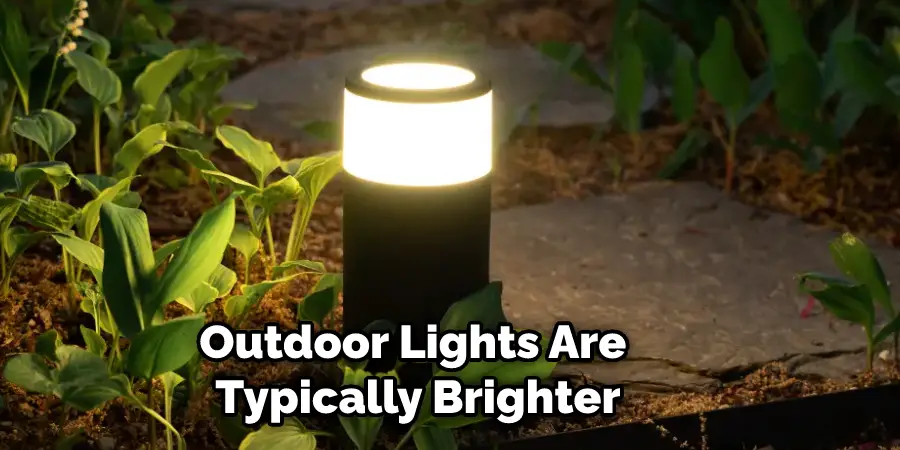
Conclusion
If you are looking for a way to save money on your energy bill, consider using indoor light bulbs outside. While they may not be as bright as outdoor light bulbs, they will provide enough light for you to see what you are doing and help you save money. We hope you have gone through the article on can you use indoor light bulbs outside.
You Can Check It Out To See Bed Bugs with UV Light
